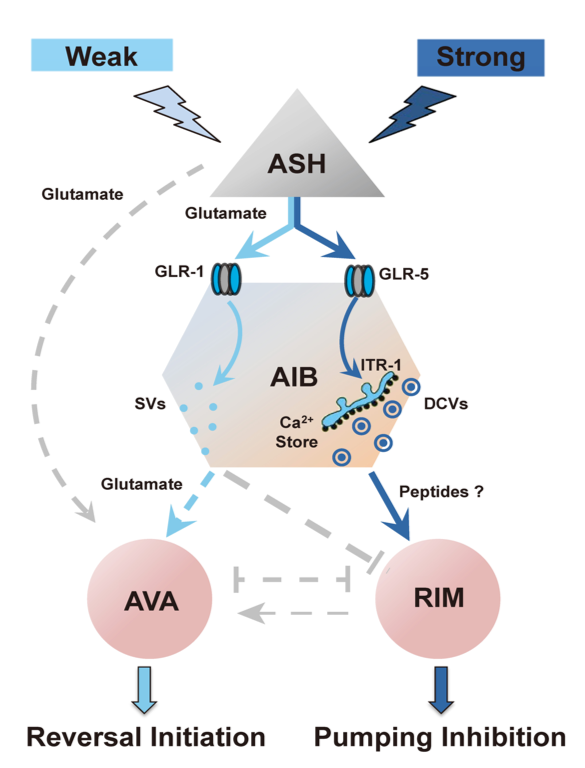Dr. Lijun Kang/'s group published in Nature Communications
On Oct 17, 2018, Professor Lijun Kang’s research group from Zhejiang University in China published a research article entitled “Decoding the intensity of sensory input by two glutamate receptors in one C. elegansinterneuron”(Wenjuan Zou, et al.)in the journal Nature Communications.
How neurons are capable of decoding stimulus intensity and translate this information into complex behavioral outputs is poorly defined. In this article from Lijun Kang’s team, they demonstrate that the C. elegans interneuron AIB regulates two types of behaviors: reversal initiation and feeding suppression in response to different concentrations of quinine. Low concentrations of quinine are decoded in AIB by a low-threshold, fast-inactivation glutamate receptor GLR-1 and translated into reversal initiation. In contrast, high concentrations of quinine are decoded by a high-threshold, slow-inactivation glutamate receptor GLR-5 in AIB. After activation, GLR-5 evokes sustained Ca2+release from the inositol 1,4,5-trisphosphate (IP3)-sensitive Ca2+stores and triggers neuropeptide secretion, which in turn activates the downstream neuron RIM and inhibits feeding. Their results reveal that distinct signal patterns in a single interneuron AIB can encode differential behavioral outputs depending on the stimulus intensity, thus highlighting the importance of functional mapping of information propagation at the single-neuron level during connectome construction.









